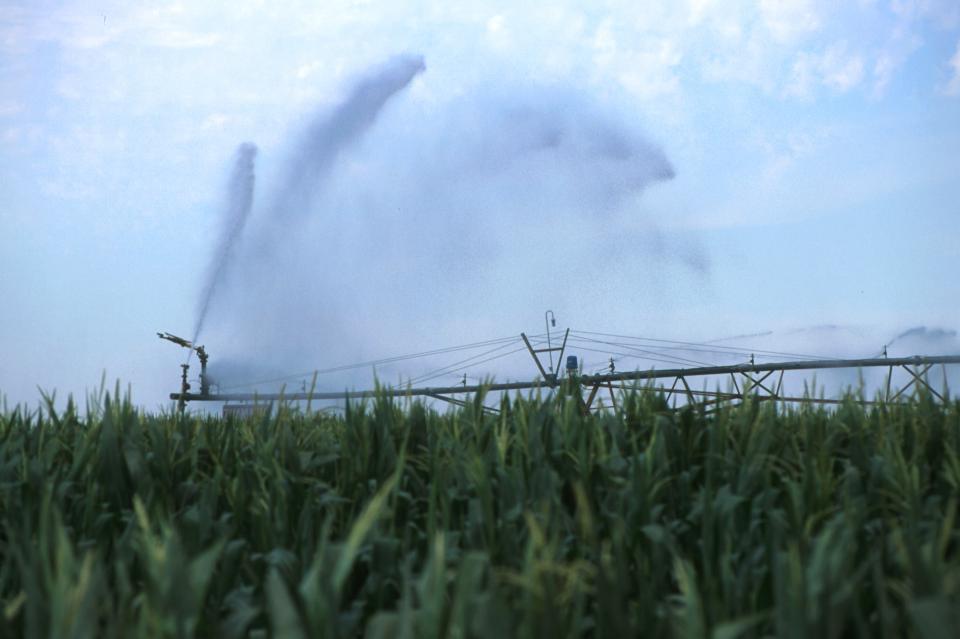
Tips for Irrigation Scheduling of Corn in the Late Vegetative Stage
The weather this spring and early summer has brought both wet periods and hot, dry ones that resulted in much of Nebraska’s irrigated corn receiving some level of irrigation. Recent rains have resulted in good moisture conditions for some areas, while other areas are getting very dry. This spring seems to be a little more extreme than most years, but every year we face variable conditions that require managing irrigation in response to crop water use as well as the rain we receive. Therefore, how should we manage the irrigation at this time of year?
The tassel through early grain fill period of corn is the most critical time for yield loss from water stress. We should do all we can to minimize stress during this time. That includes having the optimal level of water stored in the soil, not too much and not too little. Moderate moisture stress during the late vegetative growth stage usually will not lower yields and will allow us an opportunity to set the stage for the rest of the season. (See How Much Irrigation is Needed on Corn in the Vegetative Growth Stage?)
Reducing irrigation cost, lowering pumping, and developing the ability to store some rain are three important reasons to consider allowing moderate moisture stress on late vegetative corn. Additional reasons include the possibility of lowering green snap potential and helping set the stage for easier irrigation scheduling. It has been observed that in some instances corn under moderate moisture stress has suffered less green snap than the fully irrigated corn right next to it. Research studies have not been conducted to confirm this, but it does make some sense because the corn would be a little shorter and possibly less brittle.
There’s an advantage in using soil water data to manage irrigation in that you have more precise information on how much water is stored in the crop root zone and the distribution of water in the soil profile. The data is easier to analyze if the crop has used some of the water in the 16- to 24-inch root zone, which is usually drier than the top zone. As we move into the reproductive stages of corn this 16-24 inch zone can be monitored with sensors to see if the area gets wetter or drier. Keep in mind that rainfall and center-pivot irrigation are applied to the soil surface. The top foot will become very wet after these events and the second foot will only gain water if the top foot gets above field capacity (i.e., full point). When the soil profile is full of water, the crop extracts water closer to the surface first and will only extract from the next layer after the top layer becomes somewhat dry. Without measuring soil water in the drier zone, it can be a challenge to determine whether water is moving deeper in the profile, causing deep percolation and resulting in water loss and nitrate leaching.
Now, with the drier zone established, keep an eye on the soil water levels using the data from the sensors. If the 16- to 24-inch zone continues becoming drier, the irrigation system needs to keep running; however, if it starts to become wetter, stop irrigating for a few days. Ideally, after the first of August the drier zone should slowly expand deeper with the crop using most of the subsoil water by the time the crop matures. One word of caution, fields with lower capacity irrigation systems—especially in combination with sandy soils—may need to keep the entire soil profile very close to field capacity to provide adequate water to meet crop water use demand during the reproductive stages.
Summary
Research has shown that the most critical time for corn is in the early reproductive stage, when irrigation must be managed to minimize water stress on the crop. While we may have lower rainfall than the eastern Corn Belt, Nebraska’s ability to irrigate gives us a better opportunity to make sure the soil water is in an optimal range to get top yields year in and year out. One of the keys to this is to make sure we do not overwater corn during the vegetative phase, but are ready to fully water when it reaches the tassel stage.
Online Master of Science in Agronomy
With a focus on industry applications and research, the online program is designed with maximum flexibility for today's working professionals.
